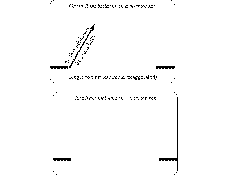
Single-slit diffraction
Variant i Dynamics first
In this tutorial, students develop and apply a simple model for single-slit diffraction based on multiple-slit interference.
Topics Waves and optics / Physical optics: models, representations, periodic circular waves, wave front diagrams, and physical optics
Materials
Materials by the UW team
- Group Handout


- Instructor Guide


- Pretest


- Exam Questions



- Equipment List

Tutorial details
In the first section of the tutorial, students consider the first minimum for 10 identical, evenly- spaced, very narrow slits. They are led to recognize that the slits can be grouped into pairs such that, at the first minimum, each pair of slits has a minimum. They are then asked whether the angle to the first minimum would change if the number of slits were doubled while the distance between adjacent slits is halved. Students are led to recognize that the angle to the first minimum would not change. They imagine that the number of slits is doubled and the spacing halved repeatedly, and realize that the angle to the first minimum for a very large number of slits is the same as for the first slit and the slit that is (essentially) in the center of the set of slits.
To motivate the need for a model for single-slit diffraction, students discuss how a single-slit diffraction pattern (with minima) is different from what would be predicted using geometrical optics (i.e., light travels in straight lines). A simple model for single-slit diffraction is then introduced: The slit can be modeled as many identical, very narrow, evenly-spaced “slits” that are so close to one another that the edges of these “slits” meet. The interference pattern produced by the light passing through the many “slits” approximates the single-slit diffraction pattern.
In the next section of the tutorial, students apply their model to predict how the diffraction pattern would be affected if (1) the wavelength of the incident light were changed or (2) the slit were made narrower. We have found it useful for students to draw diagrams similar to the one in the "associated instructors guide figure file." that show how to find the angle to the first minimum. Such diagrams allow students to make predictions without using equations.
They also allow students to argue that the slit width must be greater than the wavelength when the first minimum occurs at an angle θ less than 90°. Finally, students write an equation that can be used to determine the angle to the first minimum.
For instruction tips, login or register as a verified educator to see the Instructor Guide.
Prerequisites
Prerequisite tutorials
The Two-source interference, Wave properties of light, and Multiple-slit interference tutorials are prerequisites to Single-slit diffraction.
Other prerequisites
It is expected that students will have worked through the tutorials Two-source interference, Wave properties of light, and Multiple-slit interference.
Equipment
Special Instructions
Handouts:
- 6 copies (each in a plastic protector) of two different diffraction patterns produced by light incident on single slits of different widths (See handouts.)
- 6 color copies (each in a plastic protector) of diffraction patterns produced when red, green, blue, and white light are each incident upon the same single slit (See (See handouts.)
- 1 figure (in a plastic protector) that illustrates the mixing of colored light (See handouts.)
- 6 envelopes, each containing:
- 1 graph of a sinusoidal curve (in a plastic protector), with the horizontal axis marked and the vertical axis labeled and marked (See the Handouts section in this guide.)
- 3 transparencies of sinusoidal curves identical to those described above with only the horizontal axis marked. The sinusoidal curves should be traced with a permanent marker, one in red, one in blue, and one in green. (See handouts.)
List
- white board or large sheet of paper with markers
Research
- B. Ambrose, R. Steinberg, P. Shaffer, and L. McDermott, An investigation of student understanding of single-slit diffraction and double-slit interference, Am. J. Phys. 67 (2), 146 (1999).
- K. Wosilait, P. Heron, P. Shaffer, and L. McDermott, Addressing student difficulties in applying a wave model to the interference and diffraction of light, Am. J. Phys. 67 (S1), S5 (1999).
Coming Soon! We hope to release the discussion section on each tutorial soon.

